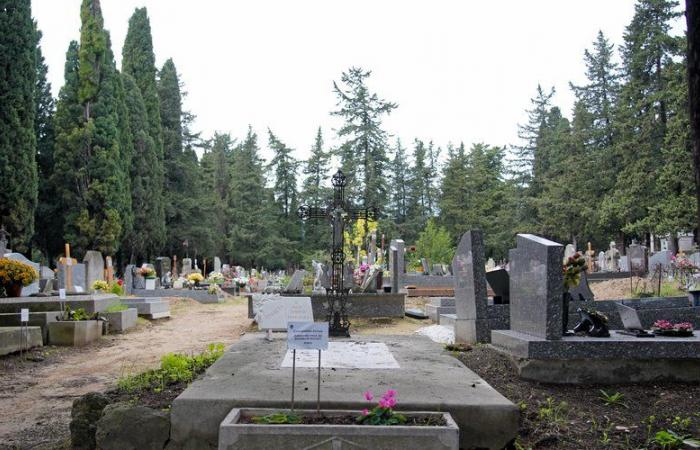
The terrible floods of 1933 were deadly in the Hérault capital, decimating Yvette Simoni's family. The latter fights in the memory of a forgotten tragedy.
For more than a year, Yvette Simoni, resident of Teyran, has fought tirelessly to obtain lasting recognition of the memory of her family, victims of the terrible Lez floods of 1933. This native of Montpellier, born Orange, tirelessly pursues a objective: to make his family's funeral plot, located in the Saint-Lazare cemetery in Montpellier, a place of… perpetual memory.
Coming to an end at the start of 2023, the thirty-year concession now threatens to disappear, taking with it the memory of the victims of this devastating and forgotten flood. Today, a small poster announces that the concession is coming to an end.
Return to a historical drama
On September 26, 1933, torrential rain fell on Montpellier and its surroundings. If the Verdanson overflows, it is especially the Lez which causes chaos, flooding the Pompignane district. That day, nine members of the Orange family found themselves trapped in their house, located opposite the famous Rimbaud house. Trapped by the sudden rise in water, seven of them perished, carried away by the raging waves: Yvette's grandmother, Marie Roux, wife of Orange, as well as her uncles, aunts and a cousin.
Only Gabriel, Yvette's future father, aged 20 at the time, and his brother Jean, then aged 17, managed to escape death after clinging to a tree all night. This tragedy deeply marked the city, and during the funeral, thousands of Montpellier residents gathered to pay tribute to the victims.
A family memory in danger
This tragedy also turned the life of Gabriel Orange upside down, who decided afterwards to join the Paris Fire Brigade, finding in this new vocation a way to overcome the tragedy. Today, his daughter Yvette wants the memory of this disaster to be inscribed in the collective memory.
“Even after all these years, I cannot bring myself to see this grave disappear”confides Yvette, visibly moved. “I am ready to renew the concession for 30 years, but what will happen after that?”she worries. Despite numerous letters addressed to the mayor of Montpellier, to the deputy for historical heritage, as well as a file submitted to the town hall, his efforts remain unanswered. “My wish would be at least that specific signage be installed in this cemetery, so that the last witness to this tragedy does not fall into oblivion”she pleads.
Yvette Simoni hopes that her fight will resonate with the authorities and that the memory of this flood, which forever marked the history of Montpellier, will be preserved for future generations.
The deadliest flood in the Lez
The floods of the Lez accelerated in the early 2000s with significant floods recorded in 2002, 2003, 2005, September and October 2014, August and November 2015. But the flood of the Lez of 1933 remains, to date, the deadliest with seven victims. During the night of September 26 to 27, 1933, heavy rains set in at the end of the day in the north of Montpellier. The day before, it was the Crau plain which was seriously affected by bad weather. In a few hours, nearly 300 mm of water fell on the city and its surroundings (300 liters of water per square meter).
The Verdanson, until now so calm, boils and overflows, flooding, in the early evening, the neighborhoods it passes through. But it is the residents along the Lez who are the most affected by this sudden rise in water which demolishes everything in its path. Bridges, trees and even houses, nothing resists. It is in the La Pompignane district that the drama unfolds in this house which faces the Rimbaud establishments. Nine people took refuge on the roof, but seven did not survive, including a 5-year-old girl. Among the only survivors: two young surviving boys, Gabriel and his brother, Yvette Simoni's father and uncle.





